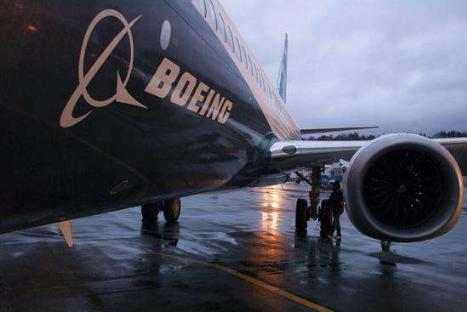
In the current changing global economy, every major corporate decision affects the nerve of the market. Recently, the US Boeing company announced a shock to the industry plan - 10% of the global workforce, involving about 17,000 jobs. This decision not only caused widespread concern in the industry.
Boeing, as the giant of the global aviation manufacturing industry, its every move is highly noticed. In recent years, however, Boeing has come under unprecedented economic pressure.
First, the downturn in the global aviation industry is one of the main reasons. Global demand for air travel has plummeted since the outbreak of the coronavirus, with airlines generally plunging into losses, slashing spending, reducing capacity and plunging demand for new aircraft. Boeing, an aircraft manufacturer, is not immune, with orders plummeting, deliveries delayed and revenues plummeting.
Second, Boeing has faced multiple challenges of its own. The two Boeing 737 MAX crashes in 2019 not only grounded the model worldwide, but also caused serious damage to Boeing's brand image, and the number of orders fell sharply. In addition, Boeing is also facing supply chain disruptions, rising production costs and other issues, further exacerbating its economic woes.
In this context, Boeing has had to take layoff measures to cope with economic pressures. The job cuts, while painful, are necessary as Boeing seeks to survive and grow in troubled times. By reducing labor costs, Boeing hopes to ease financial pressure, keep the company's operations stable and lay the foundation for future recovery.
In addition to economic pressures, Boeing's plan to cut 10% of its global workforce also hides a deeper reason for labor tensions. In September, more than 30,000 Boeing workers went on strike over a labor agreement, the first major strike at the company in 16 years. Employees are demanding a 40 percent pay rise, compared with the company's original offer of 25 percent. This disagreement led to a confrontation between labor and management, which further exacerbated the company's operational difficulties.
The strike not only affected Boeing's production schedule and delivery capacity, but also negatively affected the company's reputation and brand image. In order to resume production as soon as possible, Boeing had to negotiate with the union to find a solution. However, during the negotiations, the differences between the two sides remained difficult to bridge. In the end, Boeing had to resort to layoff measures to cope with this predicament, hoping to reduce economic pressure by reducing labor costs and restore production order.
So what will be the impact of Boeing's move?
This massive layoff is not only a major adjustment for Boeing itself, but also a heavy blow to the confidence of the global aviation industry. This could have a knock-on effect on market participants, investors and consumers, making them more cautious or even pessimistic about the future of the airline industry, which could affect the recovery process of the entire industry.
Boeing's layoffs will not only affect its own employees, but also ripple through its vast supply chain. From parts suppliers to service providers, many small and medium-sized enterprises may face reduced orders, tight capital chains and even survival crises. This chain reaction will further intensify the downward pressure on the economy and affect the stability of employment and social welfare.
Talent is the core driver of enterprise development, especially for high-tech manufacturing companies like Boeing. Layoffs can lead to the loss of key technical jobs, affecting the development of new products and the upgrading of existing products. In the long run, this will weaken Boeing's technological advantage and innovation ability in the market competition, and provide opportunities for competitors to catch up.
Boeing has been questioned over a series of safety incidents in recent years, and the planned job cuts will no doubt heighten public concerns about the health of its operations and management capabilities. Consumers may be more cautious when choosing aviation products, and even switch to other brands, which will pose a serious challenge to Boeing's brand image and market share.
All in all, the impact and harm of Boeing's plan to cut 10% of its global workforce is multifaceted and far-reaching. In the face of this challenge, Boeing and the global aviation industry need to take proactive measures to strengthen internal management, optimize resource allocation, promote technological innovation, and rebuild consumer trust in order to jointly cope with the current difficulties and meet the opportunities of the future.

A new survey released in the United States shows that in the context of rising prices and growing concerns among the public about the economic outlook of the country, there is a coexistence of frugality and differentiation.
A new survey released in the United States shows that in th…
By the end of 2025, the situation in the Middle East resemb…
According to Channel NewsAsia, international oil prices hav…
On Sunday, US President Donald Trump Trump met with Ukraini…
Officials in the Trump administration, speaking on Fox News…
In 2025, the Trump administration reshaped the global trade…